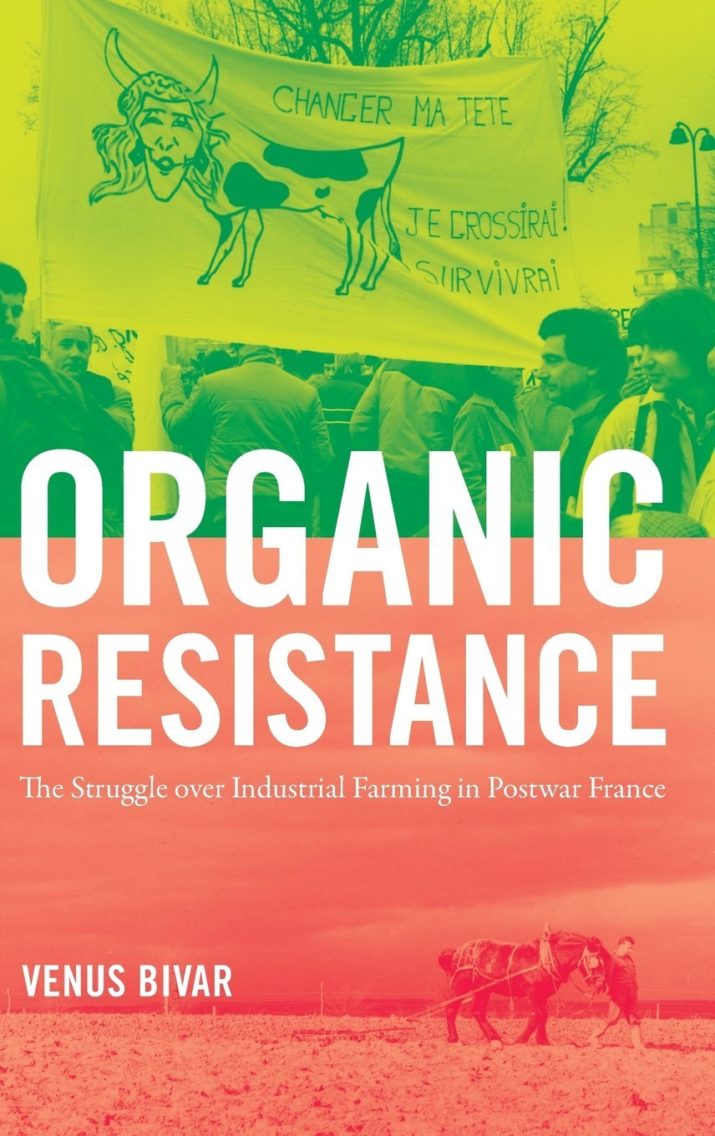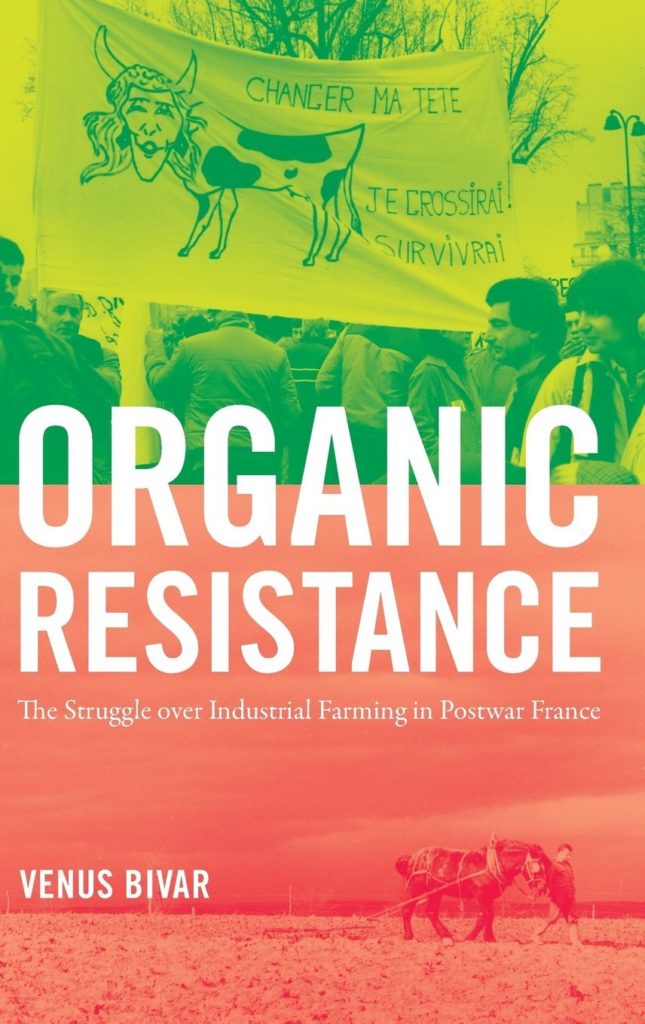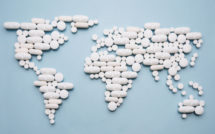

We often associate France with the highest of gastronomic ideals, producing unique artisanal products steeped in the terroir of its diverse regions. However, as argued by historian Venus Bivar in her highly readable and tightly structured book, France also represents the pinnacle of a more general twentieth-century trend toward industrialized agricultural systems, structured to support expanding numbers of food consumers with fewer food producers. By the mid-1970s, France had become the world’s second largest agricultural exporter, with only the United States surpassing it—its success epitomized by some of the largest agrifood conglomerates, such as Groupe Danone or the world’s largest dairy company, Lactalis. Bivar’s carefully researched history traces the transformation of French agriculture that began in the immediate post-World War II period, when it was still an extremely old-fashioned remnant of a bygone era, to its current hybrid and complex form, using a range of source materials together with a provocative narrative structure.
The study covers the second half of the twentieth century in France, during which productivity soared but the percentage of the working population employed in agriculture declined significantly, shifting from 33 percent at the end of the war to only 6 percent by the end of the 1980s. Yet, tens of thousands of farms disappeared every year, particularly in the period from the mid-1950s to the mid-1970s, with the remaining farms on average tripling in size as a result and able to support many more consumers than their antiquated predecessors. However, what makes this story both remarkable and puzzling is that France simultaneously established itself globally as a small-scale producer of quality goods—a reputation that Bivar claims is not necessarily accurate, given that so many French foodstuffs are made using intensive production practices, and often owned by giant corporations. Although the French experiences in this regard are not unique, they arguably had much more impact and deeper effects than similar efforts elsewhere, particularly given the disproportionate role of the state, as well as its power and France’s role and influence within Europe.
So, against this backdrop, how are we to understand the basis of our typical associations of French food with quality? Bivar usefully problematizes the very idea of “quality,” noting rightly that the term meant different things to different people, particularly at different points in history. The organic farming advocates whose activities she details equated quality with lack of chemical inputs and higher nutritional quality. But as was the case elsewhere, not only in Europe but globally, especially in the immediate post-war period, food safety was the fundamental basis of quality. Only once modernized production, processing, storage, and transportation methods were in place in the 1960s, quality came to be associated with superior products. However, at first, the markers of quality were largely marketing exercises, which later were replaced by the AOC (appellation d’origine contrôlée or controlled designation of origin) system in the 1980s, thus cementing the association of quality with transparency particularly about production methods and provenance.
The marketing myths associated with quality also have helped to mask some of the less savory origins of organic agriculture in France, which (as elsewhere, for instance in Germany) have deep ties to eugenics and fascism, with the importance of organics being closely tied to stopping degeneration and improving the health of the French race through attention to the soil and nutrition, particularly in the aftermath of the German occupation. Alternative agriculture arose from these roots, and also as a response against state control over agriculture, which many found not only politically and philosophically problematic, but also incompatible with their farms’ economic viability. Hence, Bivar convincingly develops a narrative that toggles back and forth between the high-level governmental interventions that led France to become the highly industrialized agricultural player that it is today, and the uptake of organic practices. As she shows, although these alternative approaches were adopted by many individuals for environmental and ethical reasons, they were co-opted by the government in order to be able to use quality as yet another selling point. They came to be well-supported by emerging systems such as the AOC and even otherwise forgotten concepts such as terroir, which Bivar rightly notes had been largely unused since the 1940s. Hence, what we might have assumed to be incompatible concepts—such as quantity and quality, mass production and terroir, and efficiency and artisanal methods—were used in tandem to shape France’s agriculture to become what we see today, rife with contradictions.
This book uses an admirable range of types of sources, from farmers’ own accounts as captured in their correspondence available through a cache of letters discovered at the National Archives to large-scale, detailed governmental records. Bivar exploits these sources by allowing the microhistories available in the individual and local stories to serve as frames for each chapter, which in turn illustrate the broader themes and trends to be addressed. So for instance, we hear of the mayor of a village who in 1962 protested all the way up to the French president about the effects of remembrement (land redistribution) on his constituents, which he claimed did not follow appropriate procedures and hence was inequitable. Although some farmers of course benefited from these land reforms, they also pitted farmers against each other, placed different agricultural regimes in tension, and perhaps most importantly, drew certain fundamental concepts into question, notably the notion that equal opportunity was possible within French agriculture.
However, it is essential to note what Bivar is not attempting to do by using these sources of evidence: as she notes, she does not use these accounts and voices to give agency to the farmers quoted. To do so would be impossible, as her overarching narrative stresses, because they had very little control in the face of powerful state and elite actors; despite the challenges put forward by some, most attempts at resistance were unsuccessful, as she documents. Instead, these perspectives help to show social and political connections between the local, national, and international levels, and how the actions of individuals did, in some cases, have impact, particularly in terms of opposition to the state programs associated with modernization.
My criticisms of the book are limited and perhaps mere quibbles: the title does not do justice to the complex narrative that Bivar weaves, and in particular could be mistaken as marking the organic pioneers as the book’s heroes against faceless state efforts at industrialization. In fact, as she notes, after we read these detailed histories of industrial and organic agriculture, it remains unclear which “side” we should be on, “the state that wanted to maximize productivity at all costs, or an oddball group of eccentrics who believed in magic?” (179). More generally, this book is far from a positive account of the origins of organic agriculture, which was undermined not only by industrialization but also by a lack of value-added in the face of the privileging of key concepts such as quality, traceability, and terroir. I also would have liked to have more images, as some of the few provided give us a striking window into farmers’ sentiments, particularly the politicalized hand-drawn cartoons.
Although this book obviously will be of great interest to anyone who studies the history of agriculture or of France, the story should also provide important inputs for anyone interested in Europe in the post-war period, particularly with regard to the types of modernization and urbanization seen elsewhere in Europe but also in North America, Russia, and China, to name just a few locales. But I also recommend it to anyone seeking new approaches and methodologies for writing broader-scale histories, especially when faced with very diverse and oftentimes dry source materials, as Bivar’s use of individual narratives makes the book particularly engaging and readable. In short, she helps us to understand how seemingly conflicted views on French agriculture can be reconciled because of the simultaneous market and symbolic values carried by it: the ideal farmer must be seen as both modern and traditional, efficient and artisanal, and most importantly, industrial and alternative. Bivar’s account helps to excavate this hidden history, while pointing us to the inherent conflicts that remain today in agricultural and food-related practices in France and elsewhere.
Reviewed by Rachel A. Ankeny, University of Adelaide
Organic Resistance: The Struggle Over Industrial Farming in Postwar France
By Venus Bivar
Paperback / 240 pages / 2018
Publisher: University of North Carolina Press
ISBN: 9781469641188
For a special feature on Food, Food Systems, and Agriculture, click here.
To read more book reviews click here.
Published on June 11, 2019.




